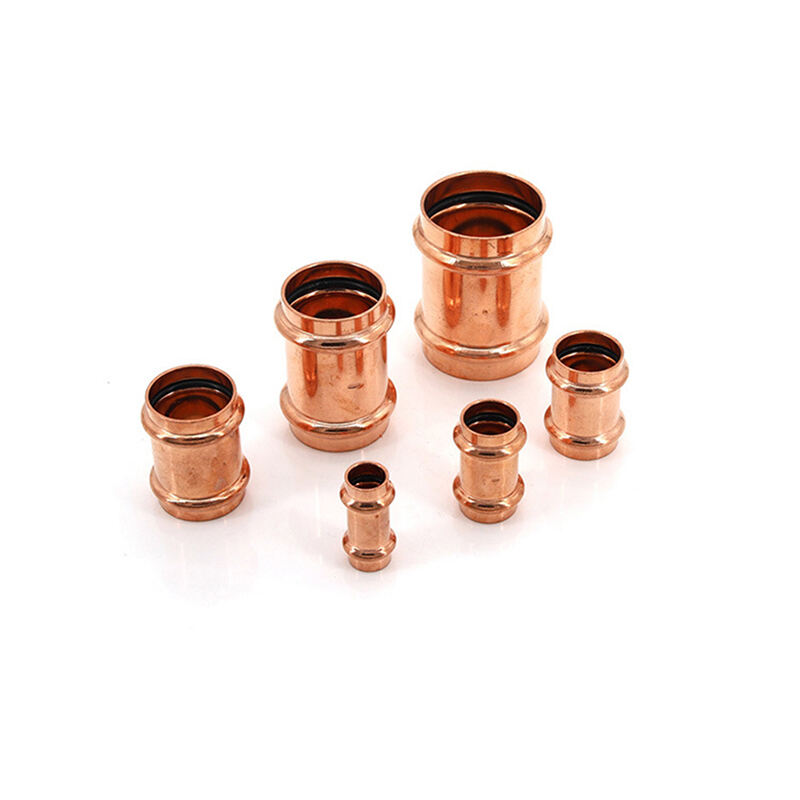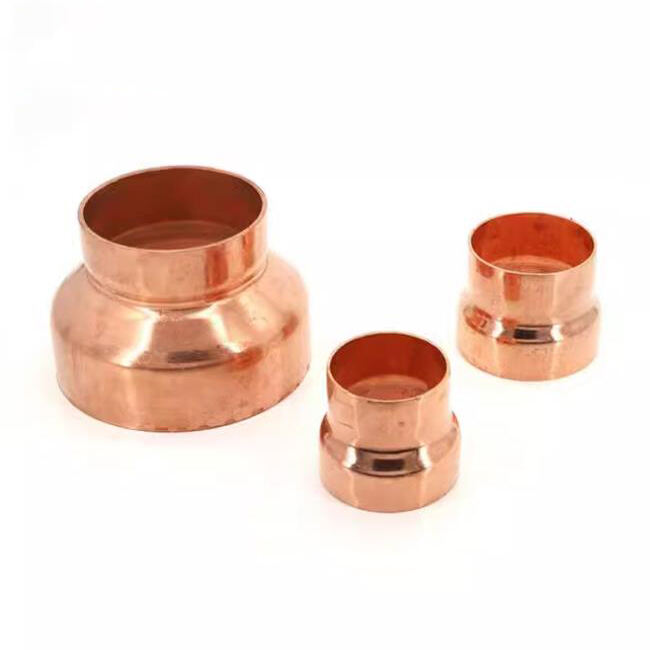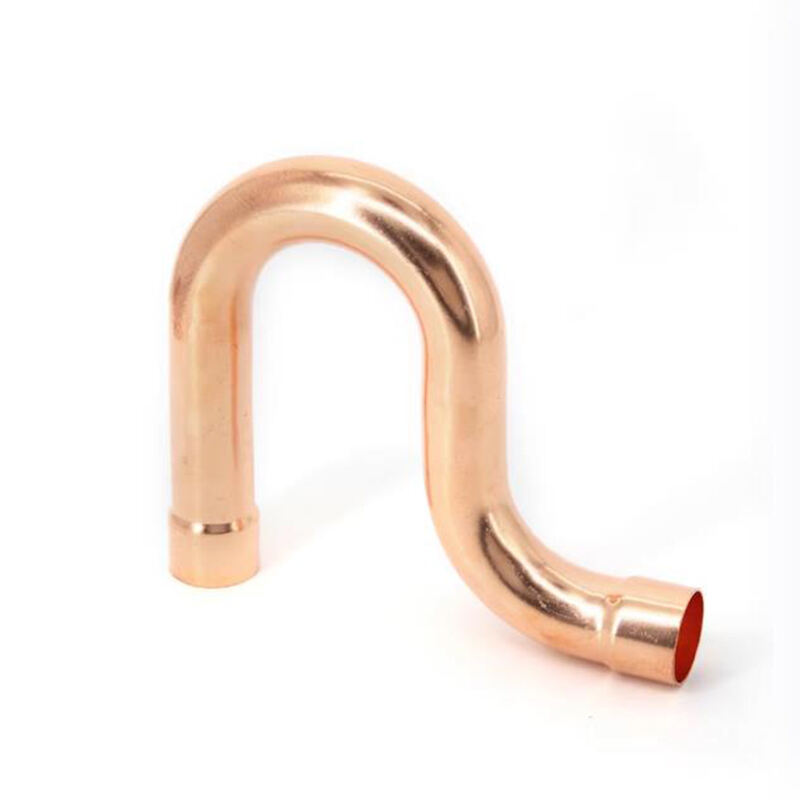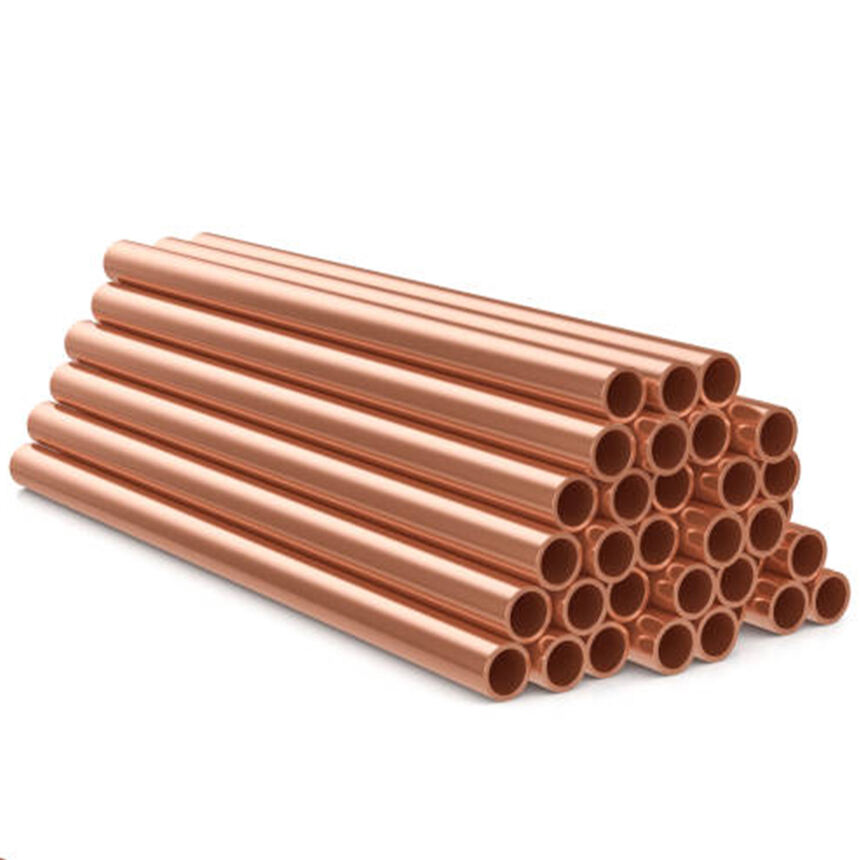Understanding Copper Pipe Pressure Reducers
Definition and Core Function in Flow Regulation
Pressure reducers for copper pipes play a key role in today's plumbing setups. What they basically do is control how much water flows through and what kind of pressure builds up, keeping things at safe levels without wasting resources. The way these work is pretty straightforward actually they take whatever high pressure comes into the system and bring it down to something that won't damage anything downstream. Why does this matter? Well, when water flows just right, households save money on their bills and the whole plumbing lasts longer too. Proper pressure management stops pipes from getting stressed out over time, which means fewer leaks, less need for repairs, and generally better performance from the entire water delivery system in homes and buildings.
Role in Maintaining Optimal Pressure Control
Keeping water pressure at just the right level in plumbing systems helps prevent all sorts of problems down the road with pipes and fixtures. Most plumbers will tell anyone who listens that wild swings in pressure are a recipe for disaster - think leaks, burst pipes, and then comes the mess and money to fix everything afterward. Some research shows homes and businesses that manage their water pressure well see their plumbing parts last way longer than those who don't bother. When pressure stays within normal ranges, it keeps the whole system from getting stressed out too much, so breakdowns happen less often and nobody has to deal with unexpected repair bills. Take washing machines as an example. These appliances take a beating when subjected to high pressure fluctuations over time, but with stable pressure they tend to run smoother for years instead of needing replacement after just a few seasons of service.
Types of Pressure Reducers for Copper Piping Systems
Copper piping systems can work with various kinds of pressure reducers, each made for different jobs around the house or business. Two main options stand out: direct acting models and pilot operated ones. The direct acting type works well in small setups since they're simple devices with fewer moving parts. For bigger installations where pressure might change frequently throughout the day, plumbers usually go with pilot operated versions because they offer better control over those fluctuations. Choosing between them really depends on what the particular system requires in terms of water flow and how much pressure needs to be maintained consistently. Also important is making sure whatever model gets installed meets recognized standards set by groups like BSI. Following these guidelines helps ensure everything functions properly whether it's installed in someone's kitchen sink or running through an entire office building's water supply network.
Installation Guidelines for Effective Pressure Management
Pre-Installation: Sizing and Material Compatibility
Getting the right size pressure reducer matters a lot when managing fluids through pipes. When picking one out, folks need to look at what kind of flow they expect plus the actual pipe dimensions so the reducer won't choke off circulation or put unnecessary strain on the system over time. Materials matter too. For instance, if someone installs stainless steel fittings onto copper pipes, corrosion problems tend to pop up pretty fast. That's why many plumbers stick with brass components for copper systems most of the time. Want to know exactly what specs work best? Check out BS EN 12783 standards from the British Standards Institution. These documents break down all the key factors engineers should consider before making a purchase decision.
Step-by-Step Installation Process
Installing a copper pipe pressure reducer involves a systematic process that even DIY enthusiasts can follow with the right guidance. Begin by collecting necessary tools, including a pipe cutter, wrench, and sealant. Follow these steps to ensure a proper installation:
- Shut Off Water Supply: Begin by shutting off the main water supply to prevent leakage.
- Drain the System: Open taps to drain any remaining water in the pipes.
- Measure and Cut Pipe: Measure the pipe where the reducer will be installed and cut the section out using a pipe cutter.
- Fit the Pressure Reducer: Attach the reducer, ensuring it aligns with the water flow direction as indicated on the device.
- Tighten Connections: Use a wrench to securely tighten the reducer to the existing pipes, applying sealant to ensure no leaks.
- Check for Leaks: Slowly turn on the water supply and check for any leaks around the reducer.
Safety is paramount, so be sure to wear protective gloves and goggles during the installation process.
Avoiding Common Errors in Valve Placement
Putting valves in the wrong spot within plumbing systems often causes major problems down the road. A big mistake many make is installing them somewhere nobody can reach when something goes wrong or needs adjusting later on. The best approach? Install pressure regulators where future work won't require tearing apart half the system just to get at them. Look what happened at Jones Manufacturing last year after they ignored proper placement guidelines their plumber suggested. Their whole production line shut down because no one could access a critical valve during an emergency. Maintenance bills shot through the roof too. Residential homeowners face similar issues when valves end up buried behind walls or under floorboards. Smart planning upfront saves headaches and money in the long run, whether it's a single bathroom fixture or an entire industrial facility.
Maintenance Strategies for Long-Term Performance
Routine Inspection and Leak Detection
Regular checks on copper pipes really matter if we want to keep them intact and avoid expensive water problems down the road. When plumbers inspect these systems periodically, they spot leaks before they turn those tiny drips into major headaches. Good leak finding usually involves things like pressure tests alongside careful visual checks using tools made for copper pipe work. Industry numbers suggest that sticking with routine maintenance might actually make plumbing last about 30% longer than usual. Longer lasting pipes mean better performance overall and fewer interruptions in water service for everyone involved.
Calibration for Consistent Flow Regulation
Keeping water pressure steady throughout a plumbing system requires regular checks on the pressure reducer over time. When properly maintained, this helps keep water flowing consistently while preventing stress on pipes and fixtures caused by sudden pressure changes. Most plumbers recommend checking these regulators every twelve months or so, though some systems might need attention more frequently depending on usage levels. The basic approach involves grabbing a good quality pressure gauge and making small adjustments to the regulator's adjustment screw until readings fall within acceptable ranges. According to field technicians who work with residential systems daily, staying on top of these adjustments makes all the difference in maintaining both performance and longevity of the entire water delivery network inside homes and buildings.
Signs Your Pressure Reducer Needs Replacement
Knowing when a pressure reducer has reached the end of its useful life matters a lot for keeping your plumbing system safe and functional. Signs something might be wrong usually show up through inconsistent water pressure readings, noticeable leaks around the unit, or strange sounds coming from pipes like water hammering effects. Getting rid of an old pressure reducer before it fails completely makes sense if we want to maintain good water flow efficiency and protect all those appliances connected downstream. We've seen plenty of situations where people wait too long to fix these issues, only to face bigger bills later on account of wasted water and expensive repairs down the road. So timely replacements really do pay off in the long run.
Advantages of Copper in Pressure Reduction Systems
Corrosion Resistance and Durability Benefits
What makes copper stand out compared to materials like steel and plastic in pressure reducer applications? Well, it comes down to how resistant copper naturally is to corrosion. This property really matters because it means these systems tend to last much longer before they start failing. Take copper piping for example most installations will still be going strong after half a century, whereas galvanized steel pipes typically show signs of wear around the 20 year mark thanks to rust buildup. The extended lifespan translates into real savings on replacement expenses and fewer headaches when dealing with unexpected repair work. Industry research consistently shows that copper systems require far less maintenance over time, making them the go to choice for plumbers who want reliable performance that lasts decades rather than just a few years.
Thermal Conductivity for Temperature Stability
One of copper's standout features is its excellent thermal conductivity, which helps keep water temperatures consistent throughout plumbing systems. This matters a lot in places like hospitals and research labs where even small temperature variations can be problematic. Copper conducts heat so well that it lets systems adjust temperatures faster than other materials would allow, cutting down on energy bills while making everything run smoother. Most plumbers will tell anyone who asks that keeping things at the right temperature isn't just about comfort it actually extends how long equipment lasts before needing replacement. And when there are fewer temperature swings stressing out pipes and fittings, maintenance crews don't have to show up quite as often, meaning savings for building owners in both money and headaches down the road.
Cost Efficiency Over Alternative Materials
Looking at how copper holds up financially shows something interesting. While the initial price tag for copper might seem steep compared to alternatives, it actually works out better for pressure reduction systems in the long run. Take plastic or PVC for instance. These materials may cost less at first glance, but they need constant attention and replacement because they don't last as long. We've seen this play out in actual installations where plastic piping needed fixing every few years while copper just kept working without issues. The numbers back this up too. Copper stands up to wear and tear much better, which means less money spent on fixes down the road. Many engineers recommend copper not just for reliability but also because it pays for itself over time through those avoided repair bills and downtime costs.









